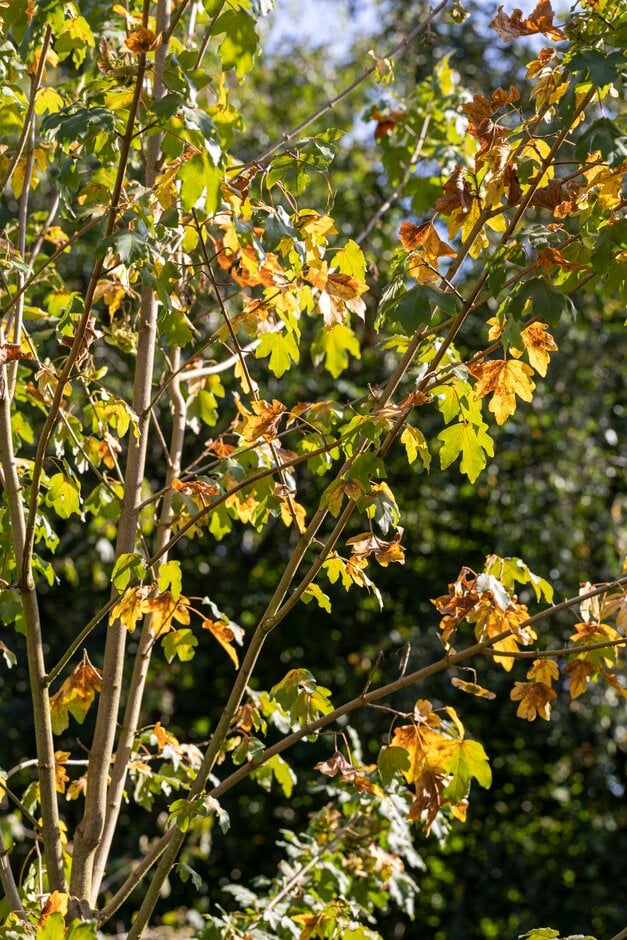Acer campestre 'Queen Elizabeth'
field maple 'Queen Elizabeth'
A vigorous, compact, relatively narrow tree, with branches ascending at 45 degrees. The leaves are three- or five-lobed, much larger and darker than the species, and turning butter yellow in autumn. Insignificant, small, green flowers are followed by typical winged fruits

Buy this plant
Size
Ultimate height
8–12 metresTime to ultimate height
10–20 yearsUltimate spread
4–8 metresGrowing conditions
Moisture
Moist but well–drainedpH
Acid, AlkalineColour & scent
| Stem | Flower | Foliage | Fruit | |
| Spring | Green | Green | ||
|---|---|---|---|---|
| Summer | Green | |||
| Autumn | Yellow | Brown | ||
| Winter |
Position
- Full sun
- Partial shade
Aspect
East–facing or North–facing or South–facing or West–facing
Exposure
Exposed or Sheltered Hardiness
H6Botanical details
- Family
- Sapindaceae
- Native to GB / Ireland
- No
- Foliage
- Deciduous
- Habit
- Columnar upright
- Genus
Acer can be deciduous trees or large shrubs with paired, often palmately-lobed leaves and small flowers followed by characteristic winged fruits. Many have fine autumn colour, and some have ornamental stems
- Name status
Accepted
How to grow
Cultivation
Grow in fertile, moist but well-drained soil in sun or light shade. Suitable for chalky soils. See tree cultivation for further advice
Propagation
Propagate by softwood cuttings in early summer
Suggested planting locations and garden types
- Architectural
- Cottage and informal garden
- Coastal
- Wildlife gardens
- Hedging and screens
Pruning
Pests
May be susceptible to gall mites, aphids, caterpillars and horse chestnut scale
Diseases
May be susceptible to powdery mildews when young, and to tar spot, verticillium wilt and honey fungus
Get involved
The Royal Horticultural Society is the UK’s leading gardening charity. We aim to enrich everyone’s life through plants, and make the UK a greener and more beautiful place.